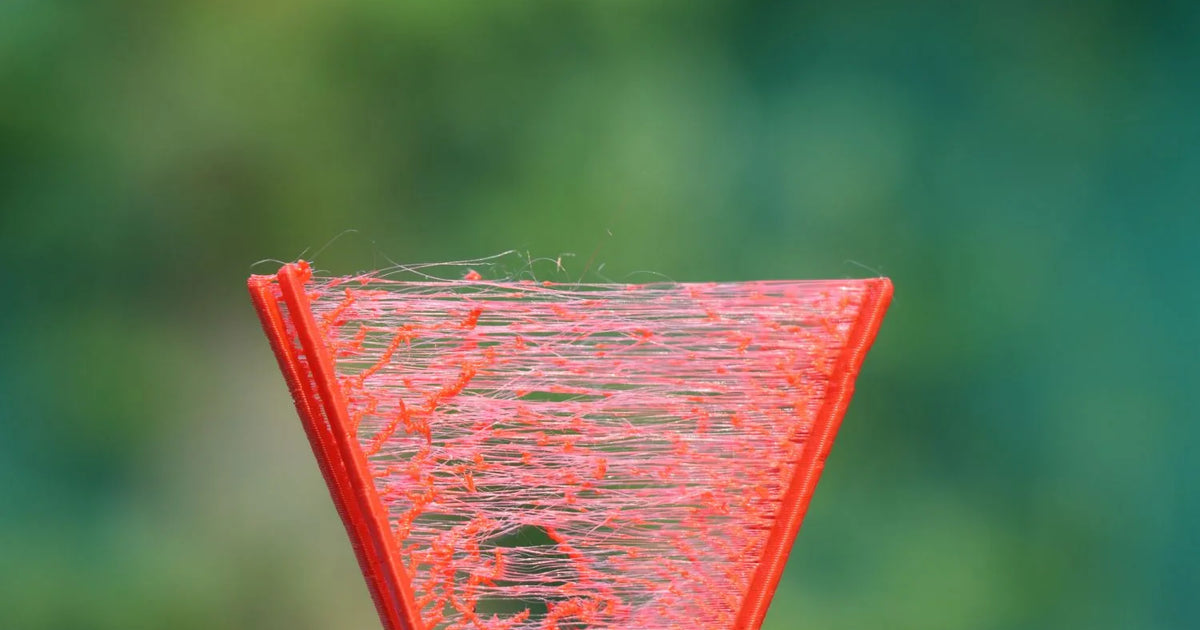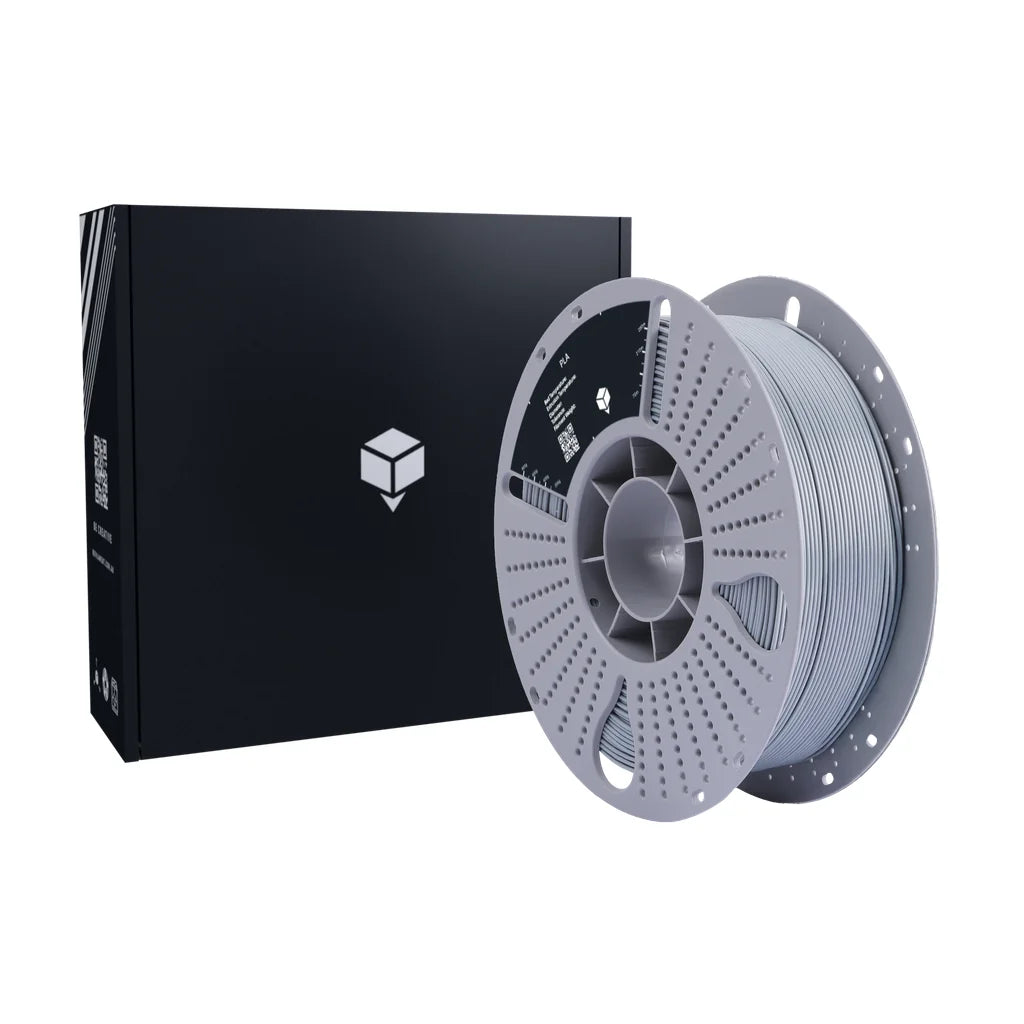
For any 3D printing enthusiast, from the seasoned professional to the curious beginner, the excitement of starting a new print can quickly turn to frustration if your filament isn't up to scratch. More often than not, the culprit isn't your printer settings or your slicing software, but something far simpler: moisture absorption. Understanding how to store 3D printer filament correctly is paramount to achieving those perfect, consistent prints you strive for.
In this comprehensive guide, we'll dive deep into the world of 3D printer filament storage. We'll explore why moisture is the enemy of quality prints, discuss the best methods and containers for effective filament humidity control, and offer specific filament storage tips, including considerations for Australia's unique climate. Our aim at Blue Ember is to equip you with the knowledge to keep filament dry, ensuring every print lives up to its potential.
Table of Contents
- Why Proper Filament Storage is Crucial for Print Quality
- Understanding Filament Types and Their Moisture Sensitivity
- Best Filament Storage Methods and Containers
- Navigating Australia's Climate: Specific Filament Storage Tips
- Practical Tips for Optimal Filament Storage
- Frequently Asked Questions
- Conclusion: Preserve Your Prints, Preserve Your Passion
Why Proper Filament Storage is Crucial for Print Quality
Imagine loading a fresh spool of vibrant PLA filament into your printer, only to watch your print turn into a stringy mess filled with bubbles and imperfections. This common scenario is almost always due to moisture contamination. Most 3D printing filaments are hygroscopic, meaning they readily absorb moisture from the air. When heated in your printer's hot end, this absorbed water turns into steam, causing a myriad of print quality issues.
Here’s why neglecting proper 3D printer filament storage can ruin your prints:
- Bubbles and Voids: As moisture turns to steam, it creates tiny bubbles within the extruded filament, leading to visible defects, rough surfaces, and weakened layer adhesion.
- Stringing and Blobs: Wet filament can cause excessive stringing between print areas and unsightly blobs on your model's surface, requiring extensive post-processing.
- Poor Layer Adhesion: The steam interferes with the proper bonding of layers, resulting in brittle parts that easily delaminate or crack.
- Reduced Strength and Durability: Prints made with wet filament are inherently weaker and less durable, failing to meet functional requirements.
- Nozzle Clogs: Over time, repeated steam explosions can lead to carbonised residue building up in your nozzle, causing frustrating clogs and requiring maintenance.
- Inconsistent Extrusion: Moisture content can fluctuate, leading to inconsistent flow rates and dimensional inaccuracies in your prints.
By understanding these pitfalls, you'll realise that effective how to store 3D printer filament strategies aren't just an option; they're an essential part of your 3D printing workflow for achieving reliable and high-quality results.
Understanding Filament Types and Their Moisture Sensitivity
Not all filaments are created equal when it comes to moisture absorption. While all benefit from dry storage, some are significantly more hygroscopic and demand immediate and rigorous attention. Knowing your filament's sensitivity is a key filament storage tip.
- PLA (Polylactic Acid): Generally considered less hygroscopic than other types, but still susceptible to moisture. You might get away with leaving a PLA White spool out for a few days without major issues, but over weeks or months, it will degrade. Symptoms include stringing, poor adhesion, and a 'popping' sound during extrusion. Storing your PLA filaments properly is still crucial for peak performance.
- PETG (Polyethylene Terephthalate Glycol): More hygroscopic than PLA. PETG is prone to bubbling, stringing, and reduced layer strength when wet. It's highly recommended to store PETG filaments in an airtight environment immediately after opening.
- ABS (Acrylonitrile Butadiene Styrene): Similar to PETG in its moisture absorption, ABS Grey and other ABS variants will quickly absorb moisture, leading to poor layer bonding, increased warping, and a rough surface finish. Strict 3D printer filament storage is a must for ABS.
- Nylon (Polyamide): Highly hygroscopic. Nylon can absorb significant amounts of moisture in just a few hours. Prints with wet nylon will be incredibly weak and brittle. If you're working with Nylon filaments, an active drying and heated storage solution is almost always required.
- Flexible Filaments (TPU, TPE): TPU and TPE are notoriously moisture-sensitive. Even short exposure to humidity can render them difficult to print, leading to severe stringing, inconsistent extrusion, and poor elasticity. These require the most stringent filament humidity control measures.
- PVA (Polyvinyl Alcohol): Used as a dissolvable support material, PVA is extremely hygroscopic and can become unusable very quickly if not stored in a completely dry environment.
- ASA (Acrylonitrile Styrene Acrylate): Similar to ABS but with better UV resistance, ASA filaments also readily absorb moisture, leading to similar print quality degradation.
The golden rule is: assume all filaments are susceptible to moisture, and always prioritise dry storage to keep filament dry, regardless of type.
Best Filament Storage Methods and Containers
Once you understand the 'why', the next step is the 'how'. There are several effective methods and best filament storage containers available, ranging from simple DIY solutions to dedicated, active systems.

1. Airtight Containers with Desiccants (Passive Storage)
This is arguably the most common and cost-effective method for 3D printer filament storage. The principle is simple: seal your filament in an airtight environment with a moisture-absorbing desiccant.
- Containers: Look for large, clear plastic containers with robust seals (e.g., those with a rubber gasket and locking clips). Vacuum-sealable food storage containers are an excellent choice. Ensure they are large enough to comfortably fit your spools.
-
Desiccants for Filament Storage: Silica gel packets are the go-to choice. These typically come in two forms:
- Indicating Silica Gel: Changes colour (e.g., from orange to green, or blue to pink) when saturated with moisture, letting you know it's time to regenerate them.
- Non-Indicating Silica Gel: Does not change colour, but is often cheaper. You'll need to periodically regenerate these based on your environment's humidity.
Place several desiccant packets (or a loose-fill bag of silica gel within a breathable pouch) inside the container with your filament. The more moisture-sensitive the filament, the more desiccant you'll need.
- Maintenance: Regenerate your silica gel in a low-temperature oven (around 100-120°C for 2-4 hours, or follow manufacturer instructions) or a food dehydrator until the colour returns (for indicating types) or they feel completely dry.
This method is excellent for maintaining already dry filament and is a fundamental filament storage tip for hobbyists and professionals alike.
2. Vacuum Seal Bags
For maximum protection, especially for highly hygroscopic filaments or long-term storage, vacuum seal bags are highly effective. These bags remove almost all air, and thus moisture, from around the spool.
- Method: Place a spool of filament into a specialised vacuum seal bag (often thicker than regular food bags) along with a desiccant packet. Use a hand pump or a vacuum sealer machine to remove the air, creating an airtight, low-humidity environment.
- Benefits: Superior moisture barrier, compact storage, and clear visibility of the filament.
- Considerations: Ensure bags are robust and free from punctures. Re-seal every time you open a spool.
This method significantly helps to prevent filament moisture and is particularly useful for exotic or expensive filaments.
3. Dedicated Filament Dry Boxes / Dehydrators (Active Storage)
These devices are designed specifically for filament humidity control and often incorporate a heating element to actively dry filament, in addition to passive desiccant storage.
- Heated Dry Boxes: Some dry boxes include a heating element that can gently warm the filament, helping to drive out absorbed moisture before or during printing. This is invaluable for re-drying filament or for printing extremely sensitive materials like Nylon directly from a heated environment.
- Food Dehydrators: A modified food dehydrator can be a very effective, budget-friendly filament dryer. Ensure it has adjustable temperature settings and enough space to fit your spools. Remove internal trays to create a larger chamber.
- Benefits: Not only store but also actively dry filament, improving print quality for even severely compromised spools.
Investing in such a system is a pro filament storage tip for those in very humid climates or who print with highly sensitive materials.
Navigating Australia's Climate: Specific Filament Storage Tips
Australia's climate is incredibly diverse, ranging from arid inland deserts to tropical coastal regions. This variability means your approach to filament storage Australia needs to be adaptable. Understanding these nuances is key to knowing how to store 3D printer filament effectively down under.

-
Coastal Humidity: Regions like Sydney, Brisbane, Cairns, and Perth experience significant humidity, especially during summer. This high ambient moisture means your filament will absorb water much faster.
- Recommendation: For coastal areas, immediately transfer opened spools into airtight containers with plenty of desiccant. Consider investing in a dedicated heated dry box, especially for PETG, ABS, Nylon, or flexible filaments like TPU. Regular regeneration of desiccants (weekly or bi-weekly during peak humidity) is vital to keep filament dry.
- Active Monitoring: Use a hygrometer (humidity sensor) inside your storage containers to ensure humidity levels remain below 15% RH, ideally below 10% RH.
-
Arid Inland Regions: While inland areas (e.g., Alice Springs, Kalgoorlie) are generally dry, temperature fluctuations can still cause issues, and dust can also be a concern.
- Recommendation: While moisture absorption might be slower, airtight containers are still highly recommended to protect against dust and occasional humidity spikes, as well as maintaining a stable micro-environment. Desiccants are still beneficial, albeit perhaps requiring less frequent regeneration than in coastal areas.
- Seasonal Variations: Even in temperate zones, humidity can vary drastically between seasons. Always be more vigilant during humid summer months and after heavy rainfall periods.
- Storage Location: Regardless of your specific location in Australia, avoid storing filament in garages, sheds, or uninsulated rooms where temperature and humidity can fluctuate wildly. A climate-controlled indoor space is always preferable for optimal 3D printer filament storage.
By tailoring your filament storage tips to Australia's unique weather patterns, you can significantly prevent filament moisture and ensure consistent print quality year-round.
Practical Tips for Optimal Filament Storage
Beyond the primary methods, these practical filament storage tips will help you refine your process for consistent success and to always know how to store 3D printer filament best.
- Store Immediately After Opening: Never leave an opened spool exposed to ambient air longer than necessary. Even a few hours can be enough for sensitive filaments to start absorbing moisture. Place it back into its dry storage solution as soon as your print is finished.
- Keep Original Packaging: Many filament spools come in vacuum-sealed bags. If these bags are resealable, use them! They offer an initial layer of protection. Always add a fresh desiccant pack when resealing.
- Label Everything: Label your containers with the filament type, colour, and when it was opened. This helps you track usage and monitor potential degradation.
- Monitor Humidity: Invest in small digital hygrometers to place inside your larger dry boxes. This provides real-time feedback on your filament humidity control efforts. Aim for consistently low readings.
- Pre-Dry Before Printing (Especially for Sensitive Filaments): If you suspect your filament has absorbed moisture, or if you're working with very hygroscopic types like Nylon or PLA Matte (which can sometimes be more prone to stringing due to its composition), consider pre-drying it in a filament dryer or food dehydrator before starting a critical print. This is often the quickest way to restore its printability.
- Rotate Stock: While proper storage extends shelf life, it doesn't last forever. Try to use older spools first to ensure you're always printing with the freshest material.
- Avoid Direct Sunlight and Heat: Sunlight can degrade filament over time, especially its colour and mechanical properties. Store filament in a cool, dark place away from windows, heaters, or direct light sources.
By integrating these practices into your routine, you'll master how to store 3D printer filament, prolong the life of your materials, and significantly enhance your printing experience.
Frequently Asked Questions
How do I know if my 3D printer filament is wet?
There are several tell-tale signs that your filament has absorbed moisture:
- Popping/Cracking Sounds: As the wet filament extrudes, you'll hear audible pops or cracks from the hot end as the trapped water rapidly boils into steam.
- Excessive Stringing and Oozing: Wet filament tends to be very stringy, leaving fine hairs or "spiderwebs" between printed sections. You might also notice more oozing from the nozzle.
- Bubbles or Voids in Extrusions: Look closely at extruded lines; you might see small bubbles or inconsistencies due to steam escaping.
- Rough or Dull Surface Finish: Prints will often have a rough, inconsistent, or dull surface texture, even if they should be smooth.
- Weak Prints / Poor Layer Adhesion: Parts printed with wet filament will be noticeably weaker and more brittle, often breaking along layer lines with minimal effort.
- Inconsistent Diameter: The filament itself might swell slightly, leading to extrusion issues.
Can I re-dry wet 3D printer filament?
Yes, absolutely! Most types of 3D printer filament can be effectively re-dried and restored to near-new print quality. Common methods include:
- Dedicated Filament Dryer: The most convenient option, these devices are designed to heat filament to the optimal temperature for moisture removal.
- Food Dehydrator: A cost-effective alternative. Modify a standard food dehydrator by removing trays to fit spools. Set it to a low temperature (e.g., 40-50°C for PLA, 60-70°C for PETG/ABS/Nylon) for several hours.
- Oven: Use with extreme caution. Set your oven to the lowest possible temperature (e.g., 40-60°C). Place filament on parchment paper, ensuring it doesn't directly touch metal. Leave the oven door slightly ajar to allow moisture to escape. Monitor closely and avoid exceeding recommended temperatures to prevent deforming the filament.
What is the ideal humidity for 3D printer filament storage?
The ideal relative humidity (RH) for 3D printer filament storage is generally below 15%. For highly hygroscopic materials like Nylon, PVA, or flexible filaments (TPU, TPE), aiming for below 10% RH is preferable. Consistently maintaining these low humidity levels is the best way to keep filament dry and ready for printing.
How often should I replace or recharge desiccants for filament storage?
The frequency depends on the ambient humidity of your storage environment and the type of desiccant.
- Indicating Silica Gel: Recharge when the colour indicator changes (e.g., orange to green, blue to pink). This visually tells you it's saturated.
- Non-Indicating Silica Gel: In a moderately humid environment, regenerating every 2-4 weeks is a good baseline. In very humid areas (like coastal Australia), you might need to regenerate weekly. For arid regions, monthly or bi-monthly might suffice.
Are dedicated filament dry boxes worth the investment?
For serious 3D printing enthusiasts, professionals, or anyone living in a high-humidity environment (like much of Australia), dedicated filament dry boxes are absolutely worth the investment. They offer:
- Active Drying: They don't just store; they actively remove moisture, preparing filament for optimal printing.
- Consistent Humidity Control: Many feature heating elements and constant monitoring, providing a superior environment.
- Print-from-Box Capability: Some allow you to print directly from the dry box, ideal for highly sensitive filaments that need to stay dry even during printing.
- Convenience: Less hassle than regenerating desiccants or using makeshift solutions.
Conclusion: Preserve Your Prints, Preserve Your Passion
Mastering how to store 3D printer filament is not just a chore; it's a critical skill that directly impacts the quality, strength, and success of your 3D prints. From understanding why moisture is problematic to implementing effective 3D printer filament storage solutions, every step contributes to a smoother, more enjoyable printing experience.
Whether you're battling the coastal humidity of Sydney or just aiming for perfection with your latest PLA Matte masterpiece, the filament storage tips shared in this guide will help you keep filament dry and pristine. At Blue Ember, we believe in empowering creators with the best materials and knowledge. Don't let moisture be the bottleneck in your creative journey.
Ready to elevate your 3D printing game? Explore our extensive range of high-quality filaments and accessories designed to help you achieve exceptional results, every time. Visit befilament.com.au today and find the perfect filament for your next project, knowing you're now equipped to store it flawlessly!

